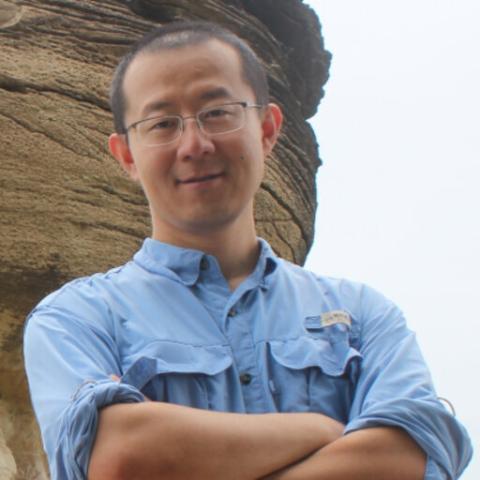Guest Speaker: Dr. Huan Cui , Assistant Professor, Kansas State University
The Williamson Family Colloquium Series
MU Department of Geological Sciences
The Same and Not the Same:
A Tale of Two Contrasting Origins of Methane-Derived Authigenic Calcite and Their Implications on Deep-Time Carbon Cycle
Dr. Huan Cui
Department of Geology, Kansas State University
Methane has long been regarded as a key greenhouse gas modulating Earth’s paleoclimate. Notably, methane-derived authigenic calcite (MDAC) cements, characterized by extremely low carbon isotopic values (δ13Ccarb < –30‰), have been reported from both the basal (within post-Marinoan cap dolostones) and upper (within the EN3 interval) parts of the Ediacaran Doushantuo Formation in South China. These anomalous geochemical signals have been proposed to bear profound implications for methane’s critical role in global biogeochemical cycles. However, the origin and diagenetic history of these MDACs remain ambiguous due to the lack of detailed petrographic and geochemical investigations at a micron scale. Here we present new insights by integrating secondary ion mass spectrometry (SIMS) and petrographic observations.
Our new data sets reveal contrasting origins for MDAC cements. In the basal Doushantuo Formation, the MDAC cements (δ13Ccarb down to –53.1‰) are post-depositional, void-filling, and rich in Mn. Importantly, petrographic and SIMS results consistently show that MDAC cements post-date disrupted dolomite laminae that bear surprisingly positive δ13Ccarb values up to +6.3‰. This is the first report of positive δ13Ccarb signals within post-Marinoan cap dolostone. The dolomite laminae and MDAC cements thus represent distinct post-depositional, exogenous, diagenetic carbon signals unrelated to Maronian deglaciation. Our findings challenge the hypothesis that methane played a central role at the end of, or immediately following, the Marinoan glaciation. Instead, methane infiltration into cap dolostones may have occurred at a relatively later stage (Cui et al., 2024).
In contrast, SIMS results of MDACs in the upper Doushantuo Formation reveal remarkable micron-scale heterogeneity of δ13Ccarb (with values down to –37.5‰) at outer shelf shoal settings. We interpret these calcite cements as resulting from microbial sulfate reduction and anaerobic oxidation of methane during syndepositional or early diagenesis. These findings suggest that the heterogeneous expressions of the Shuram excursion in South China — manifest on micrometer, centimeter, and basinal scales — was modulated by methane oxidation under variable local redox and water depth conditions (Cui et al., 2022b). The Shuram excursion, therefore, was coupled with different degrees of methane oxidation in individual basins and globally triggered by enhanced seawater sulfate during an atmospheric oxygenation event (Cui et al., 2022a; Cui et al., 2022b).
Our study demonstrates that integrated SIMS and petrographic analysis can distinguish different generations of isotopically distinct carbonate cements that are otherwise undetected by conventional analysis and, therefore, is an effective approach to assess the origin and diagenetic history of carbon isotope anomalies in the sedimentary record.
For more information about Dr. Huan Cui research, please see their Google Scholar page:
https://scholar.google.com/citations?user=XgA2sPYAAAAJ&hl=en
Room 108, Geological Science Bldg
Friday April 18th, 2025 at 3:30 pm
Refreshments will be provided
